The Samsung Galaxy S6 and S6 edge Review
by Joshua Ho on April 17, 2015 9:00 AM EST- Posted in
- Smartphones
- Samsung
- Mobile
- Galaxy S6
- Galaxy S6 Edge
Display
As we briefly discussed in our look at the specifications, the Galaxy S6 line introduces a newer generation of AMOLED displays, which is said to increase maximum luminance to 600 nits. Samsung claims that this was achieved with the use of new materials, which is likely necessary in order to sustain power efficiency improvements. It doesn't seem that AMOLED is uniquely suited to high resolution, but rather that Samsung Display Corp. is managing to dramatically improve how they make AMOLED displays with every year that offset power consumption increases from higher resolution displays.
To find out how Samsung did, we use SpectraCal's CalMAN 5 Ultimate, in addition to X-Rite's i1Pro2 Basic to characterize displays as accurately as possible.
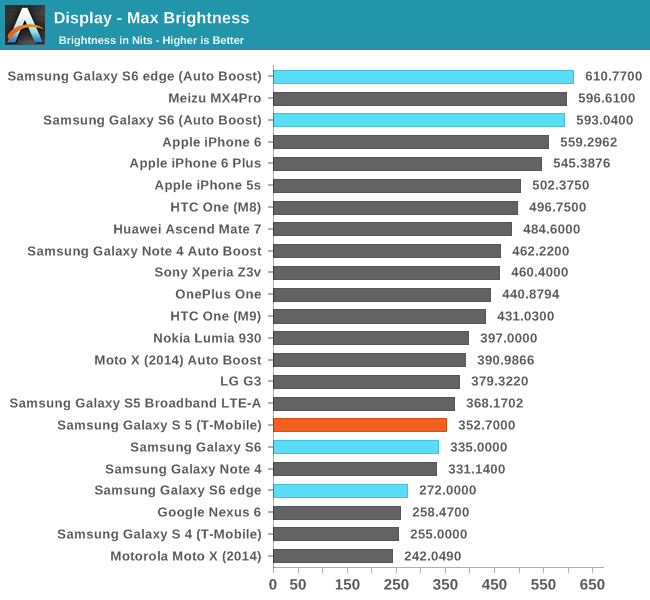
From the results Samsung's claims of a 600 nit display are valid in this case, which is a 100% APL white display. It's important to note that achieving this requires the use of auto-brightness, and that manual brightness is limited to a much lower brightness to reduce power usage, here the S6 sees similar maximum brightness as the S5. The S6 edge disappointingly only achieves 272 nits in this mode, a rather low value. I saw color balance shift dramatically in auto-boost mode, which suggests that this operating mode is likely less efficient than manual brightness. As an explanation, we've seen that colors are controlled in AMOLED by voltage while brightness is controlled by PWM (pulse width modulation). As with most recent AMOLED displays, there's no DC bias to the pixels so the contrast really is infinite instead of just a very large number when displaying black.
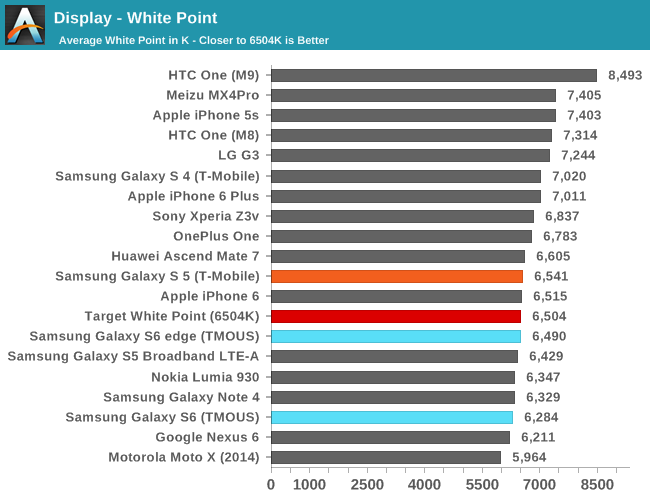

Moving on to grayscale, we can see that Samsung has done a pretty good job of controlling the white point and gamma across the saturation sweep, even if green is slightly dominant in both displays. We can also see that there is variation across displays as the S6 edge is closer to neutral while the S6 sample tends a bit warmer.
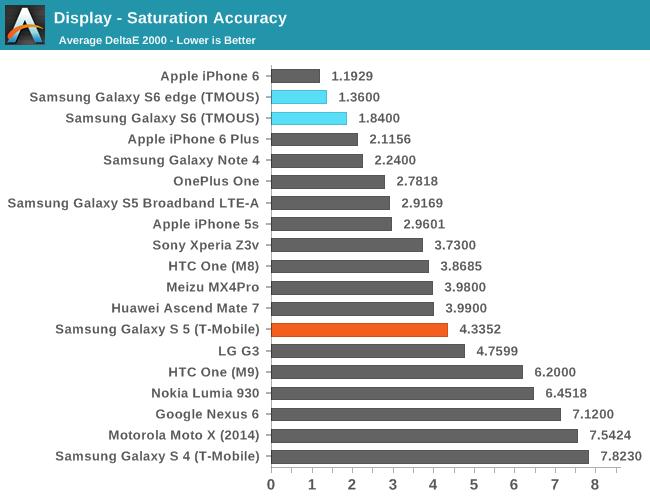
In the saturation sweep, both displays do an incredible job. I really don't have anything else to say here, because there's really no way to improve on the level of calibration Samsung has done on this display. Unless Samsung calibrates every single display in production, which is wildly impractical and effectively impossible to do, this is as good as it gets for a mass-produced device. Improving past this point will also be incredibly difficult to perceive, which means there's no real reason to go any further.
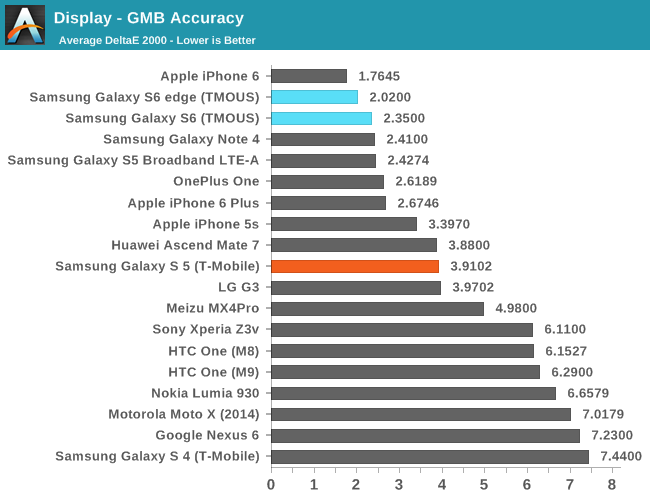
In the Gretag MacBeth ColorChecker, we can get an idea for overall color accuracy, which paints a picture similar to the saturation test. The only real problem I've noticed with these displays are the viewing angles, which can produce color shifting when the display is tilted. This is a bit of an issue on the edge variant as I can see that the edges of the display appear somewhat green when viewed head on, but otherwise there are no real issues to be seen here.
Overall, from a color standpoint it’s looking like Samsung has made one of the best displays available on the market today. Color accuracy is at the point where it’s pretty safe to say that the calibration doesn’t have clear color errors, and the peak brightness of the display is incredibly high. The 1440p resolution helps to compensate for the PenTile subpixel layout so in practice it’s effectively impossible to make out any pixels or the subpixel pattern. The contrast remains infinite as with most modern AMOLED displays, and overall it’s really hard to find any issue with the Galaxy S6’s display at first.
However while the S6 edge seems to be without any issues, the S6 does have some odd display issues that can be seen in direct sunlight as seen in the photo above. To be clear about this the photo above is a simple white screen, which should make the image completely homogeneous but instead there are two visible vertical lines and another jagged horizontal line that appear across the display. Inspection under a light microscope doesn’t really reveal what’s causing this, but the defect is quite visible in practice as seen in the photo above. I suspect that defects are rare, and in any condition other than direct sunlight I can’t see this visual problem.
While trying to see what this kind of defect looked like under a microscope, I also went ahead and took some photos of the subpixel pattern. As far as I can tell, it looks like the green subpixels have a bit more variance than what we’re used to as they tend towards oblong shapes rather than circles, which is likely due to the much tighter pixel density. It seems that this variance may cause some color shifting in certain units, which seems to remain a potential problem with Samsung's AMOLED displays. The pixel fill factor still remains surprisingly low when compared to LCDs, which usually have much higher active area. Due to the subpixel arrangement and some other differences in the display design, color shifting also remains higher than one would expect from LCD displays that are found in phones like the iPhone 6.
The final test that I managed to run on the Galaxy S6 is the brightness vs APL test, which shows the advantage of AMOLED’s emissive nature as it can dynamically increase brightness if the entire display isn’t showing a white screen. As a result, this means that in low APL scenarios like dark movie scenes and app themes it’s possible to see a maximum brightness closer to 700 nits or higher. However, in practice the display’s practical brightness is closer to 600 nits.
Overall, the display is still one of the best on the market, but I would be a bit concerned about fill factor for VR applications as that was a problem on the Note 4. Issues like purple smearing have been resolved, but there are still some problems with the display such as color shifting with changes to viewing angles and some variability in display quality from unit to unit. With this generation I suspect Samsung is either meeting or exceeding the best LCDs in quality, and with the next generation of AMOLED it’s likely that high end smartphones will have to migrate to AMOLED to remain competitive.



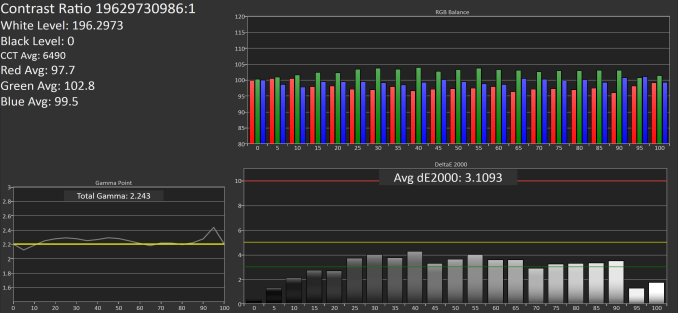
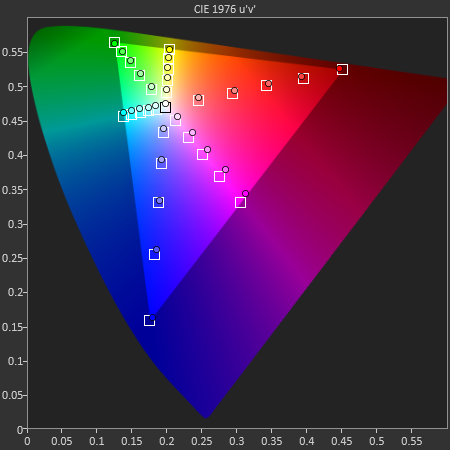
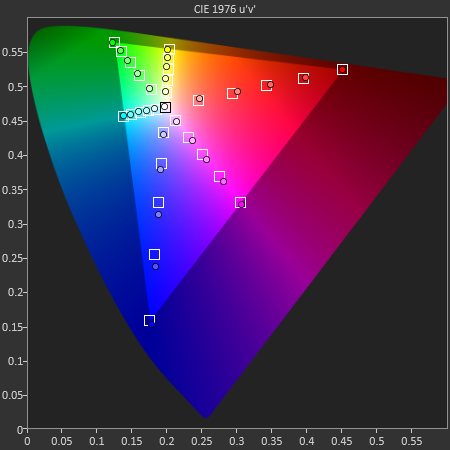
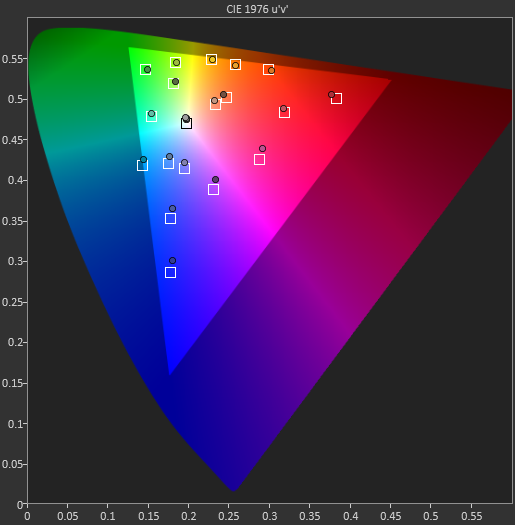

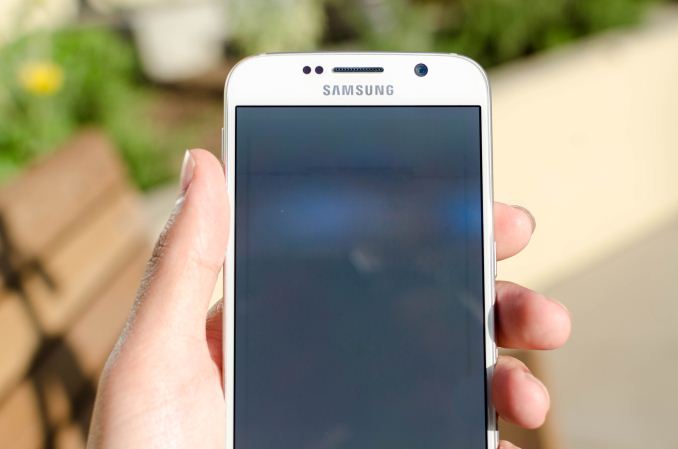
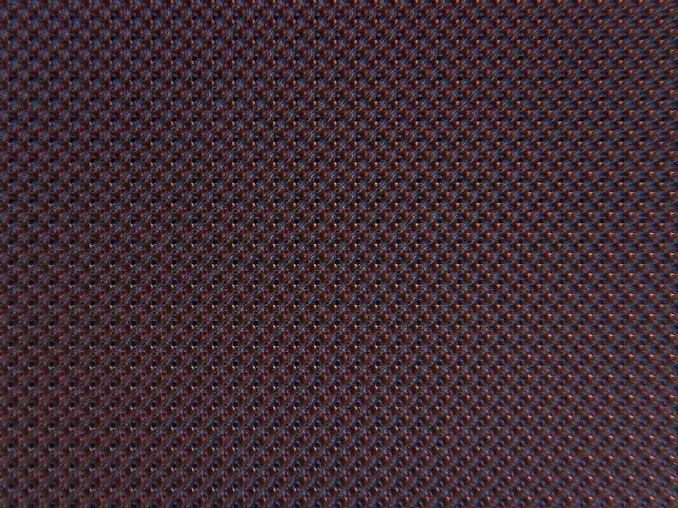
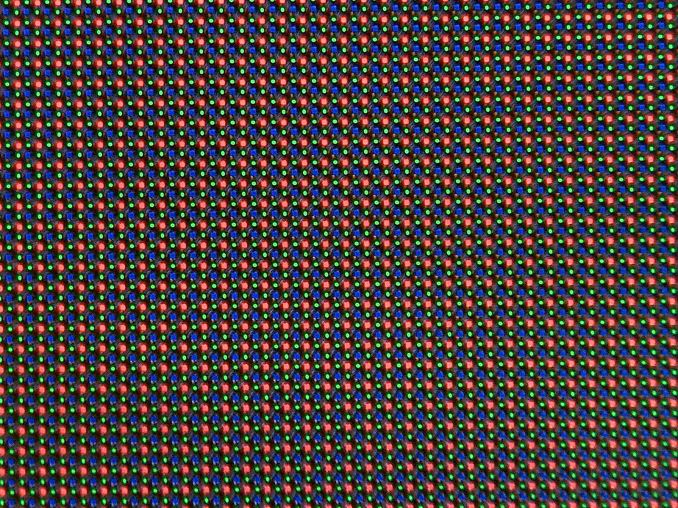
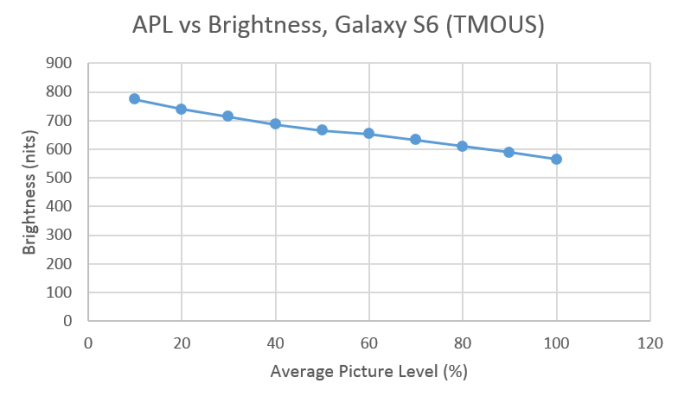








306 Comments
View All Comments
Peichen - Saturday, April 18, 2015 - link
Just get the iPhone 6+ then. I typically get between 8-10 hours of screen-on time on my 6+ divided evenly between LTE and wi-fi. My record is 10hr 23min screen-on over 1day 14hr at 36% Safari, 16% Home screen and 10% Family Guy.GreenMeters - Friday, April 17, 2015 - link
Great, you idiot reviewers have ruined the last good phone easily available in North America. Can you form-over-function morons now leave the tech sites and go write for GQ or Cosmo or whatever? Then maybe in another phone generation or two without your horrible opinions clouding all the tech sites, we can once again get an awesome pocket computer instead of shiny garbage.gnx - Friday, April 17, 2015 - link
I feel for ya. I was pretty sure Samsung, always mindful of its home market South Korea and the preponderance of those Korean users needing swappable batteries there, would ensure removable battery (if not removable SD card) .... boy, was I wrong ...Drumsticks - Friday, April 17, 2015 - link
LG G4 should have removable and microSD.phoenix_rizzen - Friday, April 17, 2015 - link
Most likely it will depend on market, same as the LG G3 and LG G2 before it.Solandri - Friday, April 17, 2015 - link
Reviewer (male) says "there was zero benefit to the edge display". Try carrying your phone around in a purse, and you will see a huge benefit to the edge display - checking notifications and seeing who is calling without having to pull the phone out of your purse.LifesABeta - Friday, April 17, 2015 - link
Nice that you guys were at my university(UCLA) to conduct these tests :DRyan Smith - Friday, April 17, 2015 - link
It's a good place. We leave Josh in their care when he isn't writing fantastic phone reviews for us. =Phalcyonmax - Friday, April 17, 2015 - link
Samsung has come out with a well rounded device this year.Good design,good hardware and acceptable software.Personally i'm impressed with samsung's cutting edge SoC .The exynos 7420 is by far the best SoC out there,clearly ahead of the snapdragon 810.The exynos maintains higher clock speeds over extended workloads while keeping power consumption and temperature in check.The GPU does lag behind in the on screen performance but that has to to do with the 2560x1440 resolution.
Samsung's innovation would have been much more prominent if they had kept the screen resolution down.
The lack of sd card and removable battery support are those aspects of the device which have the potential of making it or breaking it for a number of consumers.Personally i have no issues with a non removable battery since i'm a casual user however for hardcore gamers or power users who charge their devices at least twice a day,they inevitably would have to face the hardship of getting their device's battery replaced at some point after about a year's usage.I'm acceptant of samsung's decision to do without the sd-slot.It could be a serious let down for some but after the restriction of kitkat 4.4( for security reasons) its just difficult to move data to the sd card.My last two sd cards got corrupted and i have lost my data on sd card more than once(maybe just my carelessness).I'm happy samsung are providing wider storage options for consumers with varying storage needs.
After the disappointments of my previous samsung devices i've stayed away from anything samsung, however i'm looking forward to getting this device.
phoenix_rizzen - Friday, April 17, 2015 - link
The S6 is roughly 2 mm thinner than the S5 and yet the camera sticks out ... roughly 2 mm? Would it have been so hard to made the phone the same thickness as the S5 and make the camera flush with the body? That would also have added some extra internal volume to keep the battery closer to the size of the S5's.Another case of pointless "thinness" spec whoring. :(